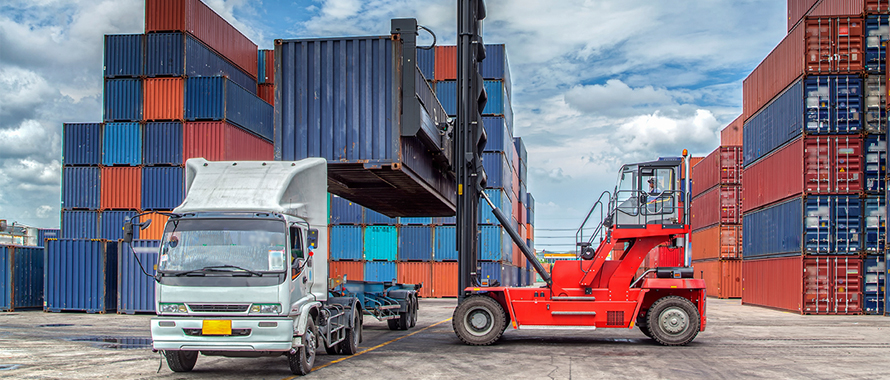The Ins and outs of Inland Marine Insurance
Safely and efficiently transporting, shipping and storing commercial cargo is a complicated business. Unforeseen perils can cause significant damage to equipment or products in your client’s possession, creating a host of legal liabilities.
It is no surprise then that Inland Marine coverage has emerged as a vital specialty insurance line for the construction, transportation and storage industries. However, with various classes of coverage available for cargo in-transit over land, navigating the various policies can be challenging for brokers.
Stephen Oxley, Senior Advisor, Burns & Wilcox Canada and Mauricio Zani, Inland Marine Underwriter, Burns & Wilcox Canada, outline five issues brokers need to be aware of when securing a class of inland marine coverage for their clients.
1. Warehouse Legal Liability vs. Bailee Legal Liability
In order to obtain warehouse legal liability coverage, the insured must issue a warehouse receipt to provide proof of storage and to limit their legal liability to that of a warehouseman. Without a receipt, the insured may be considered a Bailee [1] and held to a different level of legal responsibilities than a warehouse operator. As a first step in determining the right type of insurance coverage, brokers must review their client’s warehouse receipt.
2. Insurance Limits Assessment
Brokers need to conduct their own value assessment of the products held in storage to fully understand the scale of limits required. Too often brokers do not understand the amount of coverage required. They rely on the operations description or value provided by their client, or from a previous assessment by a past broker. This often results in inadequate limits being purchased for the client.
Zani points to the scenario of a warehouse fire as an example. “Your client assumes they only require a limit of $100,000, to which the broker obliges. However, one night a fire activates the sprinkler system causing both water and fire damage beyond the $100,000 limit. As a result the client has to pay out of pocket for replacement and repaired costs.”
Oxley highlights a further complication, “Since the broker did not conduct their own assessment of the products contained within the warehouse they were unable to make an appropriate recommendation to their client and risk facing an error and omission claim.”
To protect both their client’s assets and their own reputation, brokers and agents should be diligent in conducting their own examination of their clients’ business operations and product value.
3. Third-Party Carriers
Truckers or other transport carriers often rely on third-party carriers to help them when shipping large scale or speciality loads. However, the contracting of a third-party carrier can complicate issues of legal liability. Brokers need to know how to mitigate the complexities if their client engages an outside supplier.
Operators will maintain legal responsibility over the suppliers they contract to assist with shipping special loads. However, it is important that all third-party carriers provide proof of cargo insurance and that brokers assess the limits and conditions. If the third party carrier’s coverage is inadequate in any way, the insured may be required to use their coverage to mitigate any damage that goes above and beyond the third-party’s limits. The insured may also be held liable if their coverage does not pick up the damage. Having an accurate understanding of the third-party carriers’ insurance will aid brokers in determining if and to what level their client may be liable for cargo damage incurred while in the care and custody of the third-party carrier.
If your client operates as a freight-broker–an intermediary between businesses and transport carriers–brokers should be aware that the insurance requirements differ from those who provide shipping services in-house.
As freight brokers have no direct interaction with the cargo being transported, they maintain a level of legal responsibility over the actions of the transport carriers they contract but not over the care and custody of the cargo. Therefore it is important that they are named on the third-party insurance and are notified when an underlying policy is cancelled or changed.
4. Business Operations
The inland marine coverage held by transport carriers may be limited to shipping activities and should the carrier engage with the cargo once it has been removed from the transport vehicle, they may not be covered for any resulting damage.
“Imagine a shipper delivers a forklift to a construction site and the foreman asks them to drive the forklift into a nearby garage,” explains Zani. “If the carrier were to be involved in an accident with the forklift, or cause any property damage while driving, they would not be covered under a standard inland marine policy and could be required to pay the repair and replacement costs out of pocket.”
Oxley explains that this issue can be mitigated if the insured informs their broker in advance of any change in business practices. “If the carrier is regularly asked to perform additional tasks at delivery, they may want to connect with their broker to address the need for adjustments to their existing policy to ensure they continue to be protected should they decide to fulfill their customer’s needs.”
By understanding the full breakdown of their client’s business operations and the potential for their clients to engage in activities outside of the normal course of business, brokers are better positioned to provide appropriate insurance recommendations.
5. Riggers (on-hook) Liability
Regardless of the type of vehicle carriers operate, they are responsible for moving cargo safely and securely without causing damage. Should the carrier use a crane, tow-truck or other hauling device to transport cargo, they are at an increased risk of damage and require specialized insurance for their operations and the products they are moving.
Without the proper insurance limits, the operator can be left paying out of pocket for replacement and repair costs should the cargo be damaged while on hook.
“If your client operates a heavy duty crane that moves industrial products, they generally require higher limits then someone using a cherry picker to move small pallets of products,” explains Oxley. “Brokers should therefore have an in-depth understanding of the type of vehicle their client operates, the extent of lifting they engage in and the type of products being moved.”
Regardless of the type of commercial transportation, shipment or storage of cargo your client engages in, they require inland marine insurance to protect against the unforeseen risks associated with the activity. Brokers must work together with their underwriting partners to determine the right class of coverage and policy limits to best mitigate the costs of legal liability.





